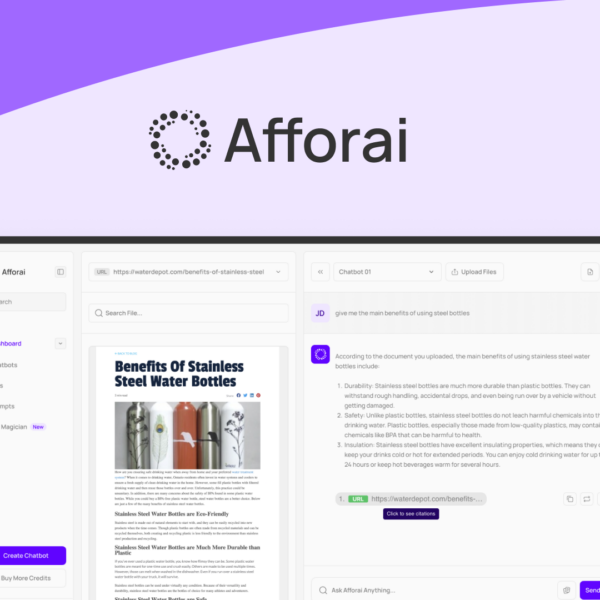Jump into the world of SaaS products with our guide on securing the best lifetime deals. Are you unsure which products will stick around? Let’s explore how to make informed choices!
Investigate the Developer’s Background
When looking at software as a service (SaaS) products, the developer’s background is super important. You want to know who’s behind the tool you’re considering. Check their experience and track record first.
Why Developer Background Matters
A solid background means trust. Developers with good experiences are less likely to vanish overnight or stop supporting their product. This can save you headaches later.
Where to Find Developer Info
Look for the company’s website, social media, and reviews. These places often have details about their history, mission, and vision. Don’t skip over customer feedback. It provides useful insights into what others think of the product.
Spotting Red Flags
If you see bad reviews or a lack of information, tread carefully. A startup with no established track record might not be the best option. Make sure there’s a clear sign of history and success.
Checking Their Support System
Another key point is customer support. Find out what support options they offer. A company that’s ready to help shows they care about their users. Look for available contact methods and response times.
By digging into the developer’s background, you can make smarter choices about your SaaS investments. Doing a little research now can lead to big benefits later.
Evaluate Recent Feature Rollouts

When checking out a SaaS product, you should evaluate recent feature rollouts. This helps you see if the product is still growing and improving. Regular updates mean the developers are active and listening to users.
Why Feature Updates Matter
New features can improve your experience. They can make the software easier to use or add useful tools. It’s a good sign if the developers keep adding valuable options.
How to Find Update Info
Most SaaS companies share update logs on their websites. They might have a blog or a section dedicated to new features. You can also follow their social media for the latest news.
Looking for Trends
Check if updates address common issues. If many users ask for a specific feature and the company adds it, that shows they care. This interaction can keep you satisfied and make the tool better for everyone.
Assessing Quality of Features
Not all updates are good. Make sure new features work well and fix existing problems. Read reviews or feedback from other users to see if the updates are effective.
By evaluating feature rollouts, you can better understand if a SaaS product is the right fit for you. Keeping up with changes shows you how much value you can get.
Analyze the Roadmap Plan
To make good decisions about a SaaS product, it’s vital to analyze the roadmap plan. This plan shows what features will come next and when. A clear roadmap signals that the developers have a solid direction and goals.
Understanding the Roadmap
A roadmap usually outlines planned updates, new features, and improvements. It gives you a sneak peek at what you can expect from the product in the future. Understanding this helps you see if the product will meet your needs later.
Checking Update Frequency
Look for how often the company updates its roadmap. If they regularly add new plans or timelines, that’s a great sign. It shows they are committed to growth and user satisfaction.
Identifying User Feedback Influence
Good roadmap plans often include features based on user feedback. Check if users can suggest ideas or vote on upcoming features. This kind of engagement means the company values its customers’ opinions.
Evaluating Past Performance
Also, look at how well they followed their previous roadmap. Did they deliver on promises? If they often miss deadlines, that could raise concerns about reliability.
By analyzing the roadmap plan for a SaaS product, you’ll be in a better position to choose one that fits your needs now and in the future. Keeping up with these plans will help you stay informed and ready.
Engage with Customer Support

Engaging with customer support is crucial when choosing a SaaS product. This step helps you understand how responsive and helpful the company is. Good support can make a big difference in your experience.
Why Customer Support Matters
If you run into problems, you want fast help. A great customer support team can solve issues quickly. This can save you time and frustration when using the software.
How to Test Customer Support
Before committing, try reaching out to support. Ask a question through email or chat. See how long it takes to get a reply and how helpful they are. This gives you a sense of their service quality.
Looking for Support Options
Check what support channels are available. Common options include email, live chat, and phone support. Some companies even offer online tutorials or communities. A variety of options shows they care about helping users.
Reading Customer Reviews
Don’t forget to look for customer reviews online. Feedback from other users can reveal how effective support is. If many users mention slow responses, that’s a red flag.
By engaging with customer support, you can ensure you’ll receive the help you need if issues arise. This step is key to deciding if the SaaS product is right for you.
Assess Immediate or Future Needs
When choosing a SaaS product, it’s important to assess your immediate or future needs. Think about what problems you want to solve. Consider both short-term and long-term goals.
Identifying Short-Term Needs
Start by listing what you need right now. Do you want better team communication or faster file sharing? Be specific about your current pain points. This will help you find a product that fits right away.
Considering Future Needs
Next, think ahead. Will your team grow soon? Will you need more features later? Choosing a product that can scale with your needs is a smart move. Look for tools that offer upgrades or add-ons.
Matching Features to Needs
Once you know your needs, match them with the features offered by different SaaS products. Create a checklist of must-have features. This way, you can easily compare options and make the best choice.
Getting Input from Your Team
Don’t forget to ask your team about their needs. They might have insights you didn’t think of. Involving everyone in the process can lead to better outcomes for your organization.
By assessing both immediate and future needs, you can choose a SaaS product that’s worthwhile now and later. This approach helps ensure you’re investing in tools that truly support your goals.




